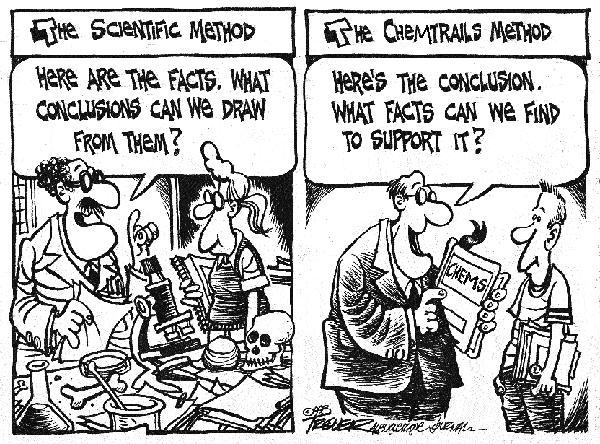
Before we start our leisurely white waters rafting trip down that roaring river of level four lies and level five false fabrications, please remember to put on your sanity safety helmet lest you fall, flail and lose sight of that which you should have known in the first place before we started tripping down into Alice's Falls. It's a bottomless pit of fibs, fabs, lies and deceptions.
We shouldn't, after all, trust them who are supposed to be here to protect us when they tell us they are from the government and they arehere to protect us. Beware these deceivious scriveners of new false law. Beware their jabberwhack skulduggery.
Take for example what Clarence the Clownish rafting guide tells us upon embarking down through Alice Falls about us always having had for over 150 years these newly frameworked exception rules that never existed beforehand. (Hold your breath.)

"[*1] We have long held [oh really? that long?] that this provision [§101] contains an [*2] important implicit exception: Laws of nature, natural phenomena, and [*3] abstract ideas are not patentable." Association for Molecular Pathology v. Myriad Genetics, Inc., 569 U. S. , (2013) (slip op., at 11) (internal quotation marks and brackets omitted). We have interpreted §101 [*4] and its predecessors in light of this exception for more than 150 years. Bilski, supra, at 601-602; see also O'Reilly v. Morse, 15 How. 62, 112-120 (1854); Le Roy v. Tatham, 14 How. 156, 174-175 (1853).

... in applying the §101 exception [*5], we must
[most assuredly indefatigably must] .....
(click below "Read More" for more)
distinguish between patents that claim the [scientifically demonstrated and well agreed upon] Buildin[g]
block[s]"' of human ingenuity [*6] and those [patents] that integrate the[se invisible, but believe me they are there!]
building blocks into something more, Mayo, 566 U. S., at
(slip op., at 20), thereby "transform[ing]" them into a
patent-eligible invention, id., at (slip op., at 3). The
former "would risk disproportionately tying up the use of
the underlying" ideas, id., at (slip op., at 4), and are
therefore ineligible for patent protection. The latter pose
no comparable risk of pre-emption, and therefore remain
eligible for the monopoly granted under our patent laws.

... we set forth [as if we had been doing so for 150 years perhaps, or even more, perhaps] a framework for distinguishing patents that claim laws of nature, natural phenomena, and abstract ideas from those that claim patent-eligible applications of those concepts. First, we determine whether the claims at issue are directed to one of those patent-ineligible concepts. Id., at (slip op., at 8). If so, we then ask, "[w]hat else is there in the claims before us?" Id., at (slip op., at 9).
Notes
[*1]: See? You are being reminded about that which you "should" have known about in the first place, a false history.
[*2]: The first deception is a small one. Gets your subconscious prepped for accepting bigger ones coming down the pike. It's not one ("an") exception. He's actually naming three (3) of them.
[*3]: Mother Nature does not reveal "her" laws. Laws of Nature is actually a euphemism for our ideas/theories of how she works. Did you ever wonder in the first place about the difference between plain ideas and "abstract" ideas? Another thing which you "should" have known about in the first place. Now you're worrying about what else you forgot about. Fear, uncertainty and doubt are creeping in. Beware the FUD-whacky my son.
[*4]: This is not an "interpretation." It is something significantly completely new that has not long existed. But you already doubt yourself. (FUD times 2.) So why question now?
[*5]: Don't trust Clarence the Clownish raft tilting guide. Read 101 for yourself. There is no one singular "exception" inside of it. Section 101 says "ANY new and useful ..." There is no "directed to" exception inside 101. One must evaluate that which the inventor regards as the invention (section 112) and determine whether it falls within the useful arts. Clarence the Clownish raft tipsy-over guide has stripped inventors of their statutory section 112 rights to define that which they regard as "their" invention. The US Constitution talks about "their" respective discoveries. It recognizes the exclusive right of the inventor to determine what is "their" invention and to obtain exclusive, secure rights in "their" invention.
 [*6]: Here is where the bigger lies start snaking their ways into the maniacal monologue. There are no "Building Blocks" (baby's, Lego's, Free Masons' or otherwise). Human "ingenuity" is a vane delusion. Courtesans of The Emperor's New Clothes were taken in by a similar appeal to vanity and the FUD factors (Fear, Uncertainty, Doubt) ... Where and when did the "building blocks" enter the conversation? Who knows? Maybe from this Mayo brief and its discussion of the Bilski "basic tools of scientific and technological work” which allegedly "must be available for building future inventions".
[*6]: Here is where the bigger lies start snaking their ways into the maniacal monologue. There are no "Building Blocks" (baby's, Lego's, Free Masons' or otherwise). Human "ingenuity" is a vane delusion. Courtesans of The Emperor's New Clothes were taken in by a similar appeal to vanity and the FUD factors (Fear, Uncertainty, Doubt) ... Where and when did the "building blocks" enter the conversation? Who knows? Maybe from this Mayo brief and its discussion of the Bilski "basic tools of scientific and technological work” which allegedly "must be available for building future inventions".

No comments:
Post a Comment